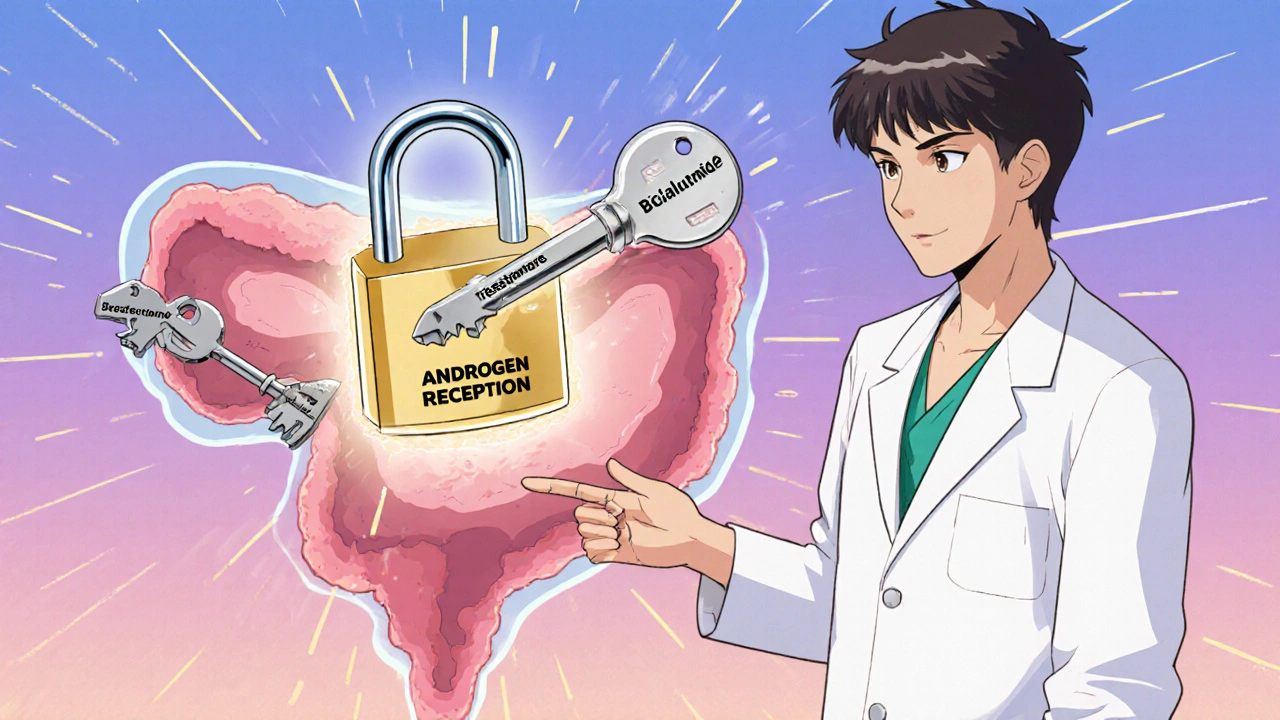When treating prostate cancer, bicalutamide, a non-steroidal antiandrogen used to block testosterone’s effect on cancer cells. Also known as Casodex, it’s often paired with other therapies to slow tumor growth. Unlike chemotherapy, it doesn’t kill cells—it stops them from growing by shutting down the signals that fuel prostate cancer. This makes it a key tool for men with advanced or hormone-sensitive disease, especially when surgery or radiation aren’t options.
Most doctors start with a 50 mg daily dose, taken at the same time each day, with or without food. That’s the standard for most adults, but it’s not one-size-fits-all. If you’re older, have liver issues, or are on other meds like warfarin or statins, your dose might change. Blood tests help track how your body responds—liver enzymes are checked regularly because bicalutamide can cause mild, sometimes serious, liver stress. You won’t feel it working right away; it takes weeks for testosterone levels to drop and symptoms like bone pain or urinary trouble to improve. Patience matters, but so does communication—tell your doctor about any new fatigue, nausea, breast tenderness, or hot flashes. These are common, but they shouldn’t be ignored.
Some men develop gynecomastia—breast swelling or pain—because blocking testosterone shifts hormone balance. This isn’t rare. In fact, up to 70% of men on bicalutamide notice some breast changes. Wearing a supportive shirt helps, and in some cases, doctors add a low-dose estrogen blocker to reduce it. You might also see changes in libido or erectile function. That doesn’t mean the drug isn’t working—it’s just how the body reacts when androgens are blocked. If side effects feel overwhelming, alternatives like enzalutamide or apalutamide exist, but they’re stronger, pricier, and come with their own risks. Bicalutamide stays popular because it’s effective, well-studied, and often covered by insurance.
What you won’t find in every guide is how bicalutamide fits into the bigger picture. It’s rarely used alone. Most often, it’s combined with LHRH agonists like leuprolide to fully shut down testosterone production—a combo called maximum androgen blockade. This approach has been around for decades, but newer drugs are slowly replacing it in some cases. Still, for many, bicalutamide remains the go-to because it’s affordable, predictable, and has decades of real-world use behind it. If you’re starting it, know that consistency matters more than perfection. Miss one dose? Take it when you remember. Miss two? Skip the make-up dose and get back on track. Don’t double up.
Below, you’ll find detailed comparisons of bicalutamide with other treatments, real-world dosage tips from patients and doctors, and what to do when side effects get too much. These aren’t just theory—they’re based on actual cases, clinical data, and the questions men ask every day.

A clear, up‑to‑date guide on Bicalutamide covering its uses, dosage, side effects, monitoring, and drug interactions for prostate cancer patients.